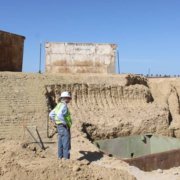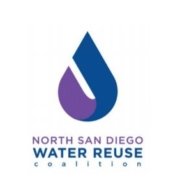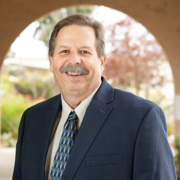Mayor, EPA Chief Celebrate First Phase of San Diego’s Drought-Resistant Water Recycling Project
Mayor Todd Gloria, along with state and federal leaders, formally kicked off construction of Phase 1 of the city’s Pure Water program August 20. The project is intended to provide nearly 50% of the city’s drinking water by 2035 and reduce the need for imported water.
Helping the mayor celebrate the historic occasion in University City were Rep. Scott Peters, California Senate President Pro Tempore Toni G. Atkins, Environmental Protection Agency Administrator Michael S. Regan and California State Water Resources Control Board Chair E. Joaquin Esquivel.
Water recycling project
“Today, we celebrated the launch of the largest, most ambitious infrastructure project in San Diego’s history,” said Gloria. “The Pure Water program will guarantee us a local water resource that allows San Diego to be drought-resilient and environmentally sustainable. This is a key part of how we will provide clean drinking water to our residents for generations to come.”
Two Water Infrastructure Finance and Innovation Act loans from the EPA are providing funding for up to $733.5 million toward the program’s Phase I projects. Additional funding for the construction of the project will come from Clean Water and Drinking Water State Revolving Fund loans in the amount of $665.1 million, and more than $80 million in federal and state grants, which do not need to be repaid.
The city will also receive a $340 credit from the Metropolitan Water District of Southern California for every acre-foot — enough water to supply up to four households for a year — produced for 25 years. This corresponds to a credit of $285.6 million over the life of the agreement, project leaders said.
Read the complete story from Times of San Diego here: https://bit.ly/3zgns1q
In San Diego today w/ @ToddGloria @RepScottPeters @SenToniAtkins & @ejesquivel to announce a $120 million #WIFIA loan to support the Pure Water program, which will create a more drought-resilient water source, improve water quality and create thousands of jobs along the way👍🏾🌎 https://t.co/JlVzPPHK3D pic.twitter.com/xvdUaxTerx
— Michael Regan, U.S. EPA (@EPAMichaelRegan) August 20, 2021
Pure Water San Diego is one of three potable water reuse or recycling projects under development in the San Diego region. The City of Oceanside is working toward creating 50% of its water supply locally, including Pure Water Oceanside, by 2030.
The East County Advanced Water Purification project would recycle 15 million gallons of annual wastewater discharge into drinking water, meeting 30% of the demand for potable water in East San Diego County.
(Editor’s note: The City of San Diego is one of the San Diego County Water Authority’s 24 member agencies that deliver water across the metropolitan San Diego region.)





